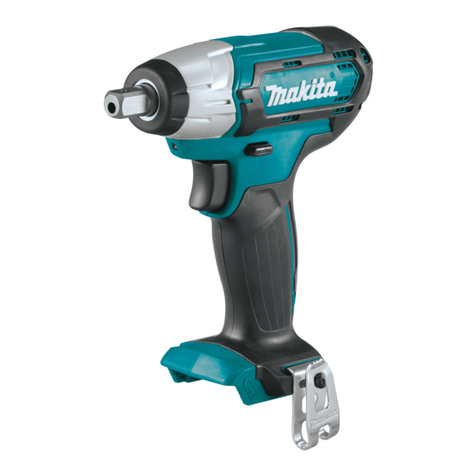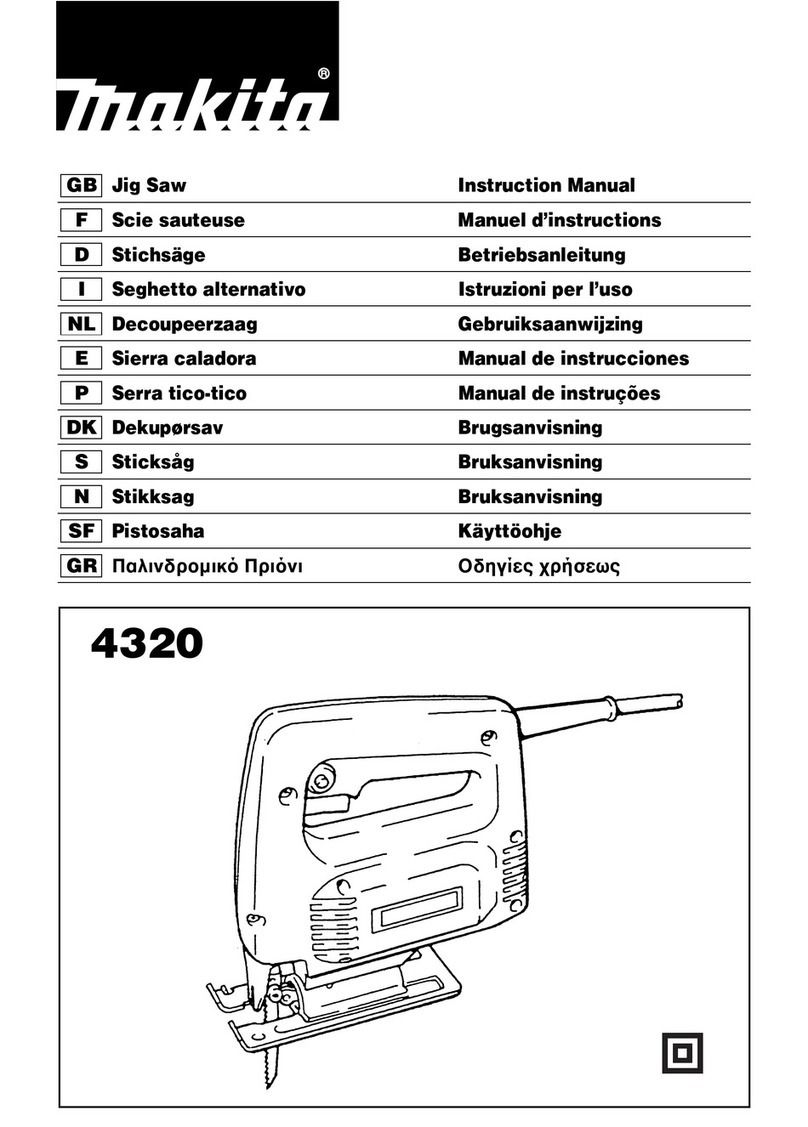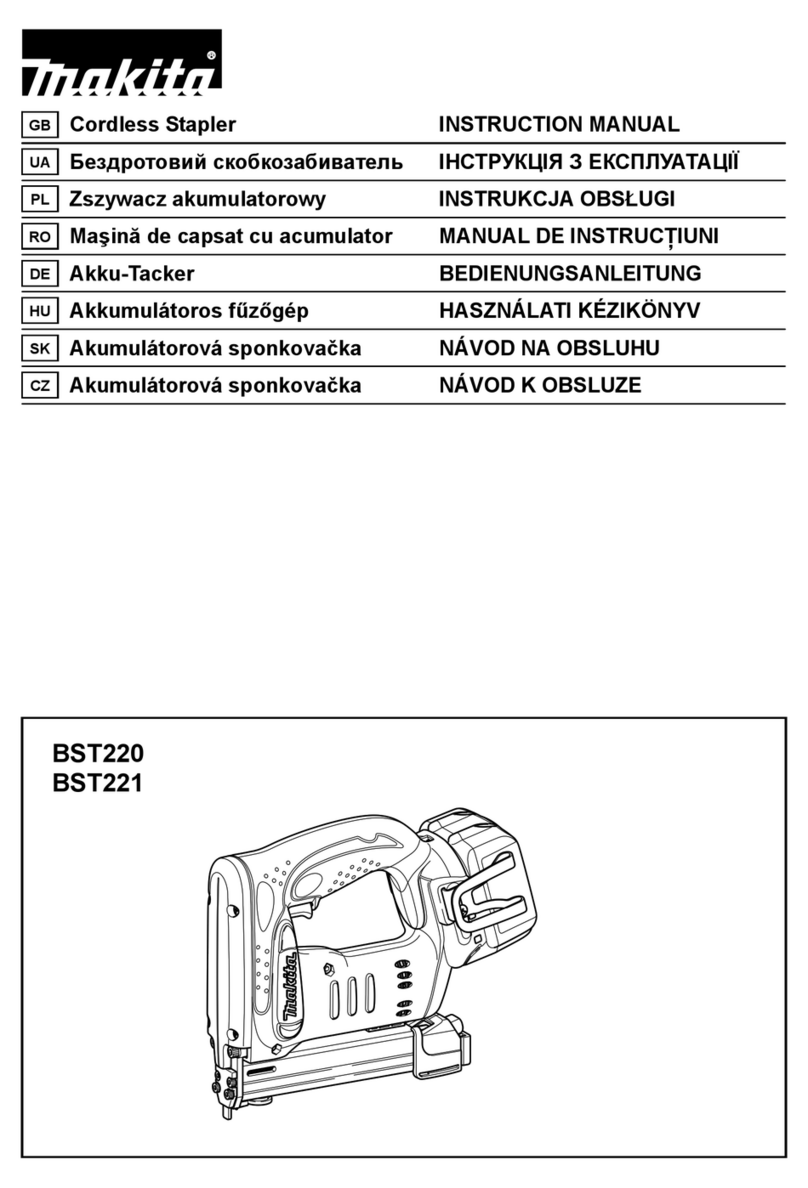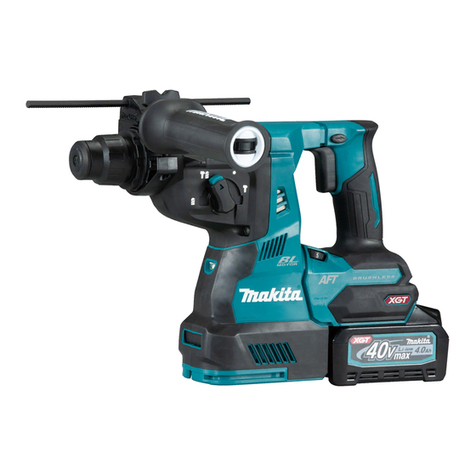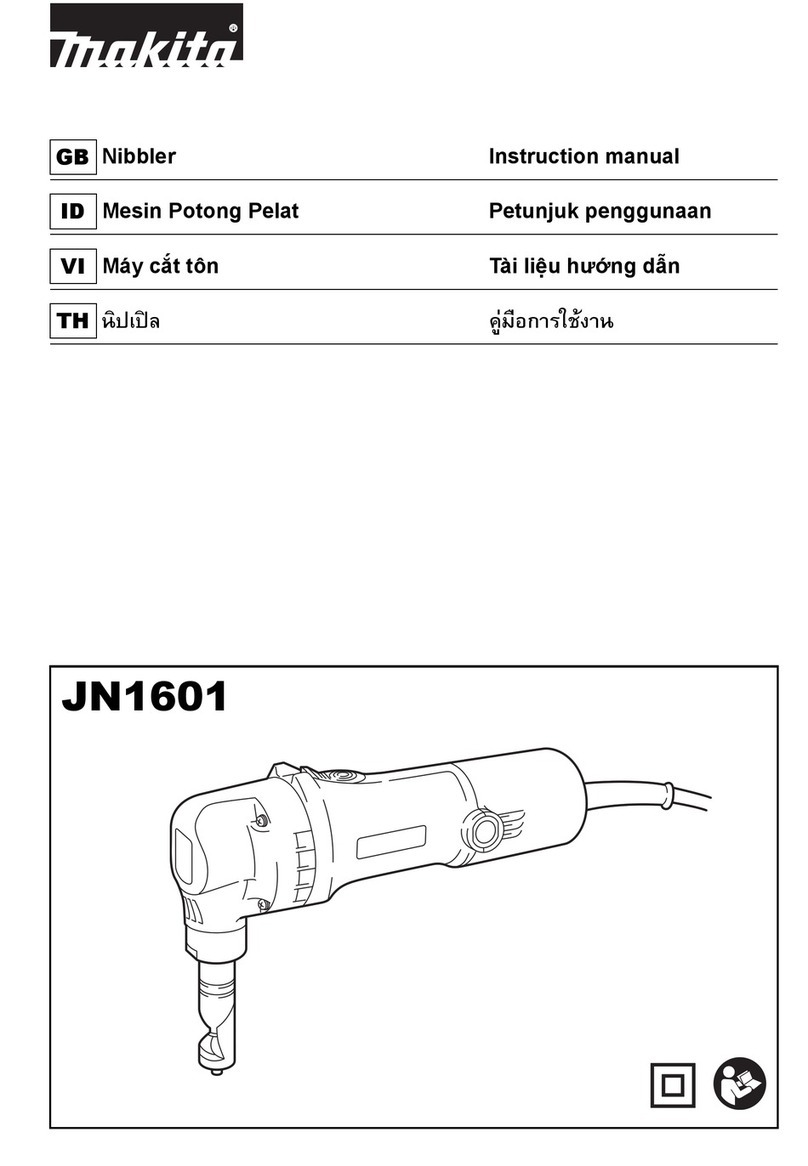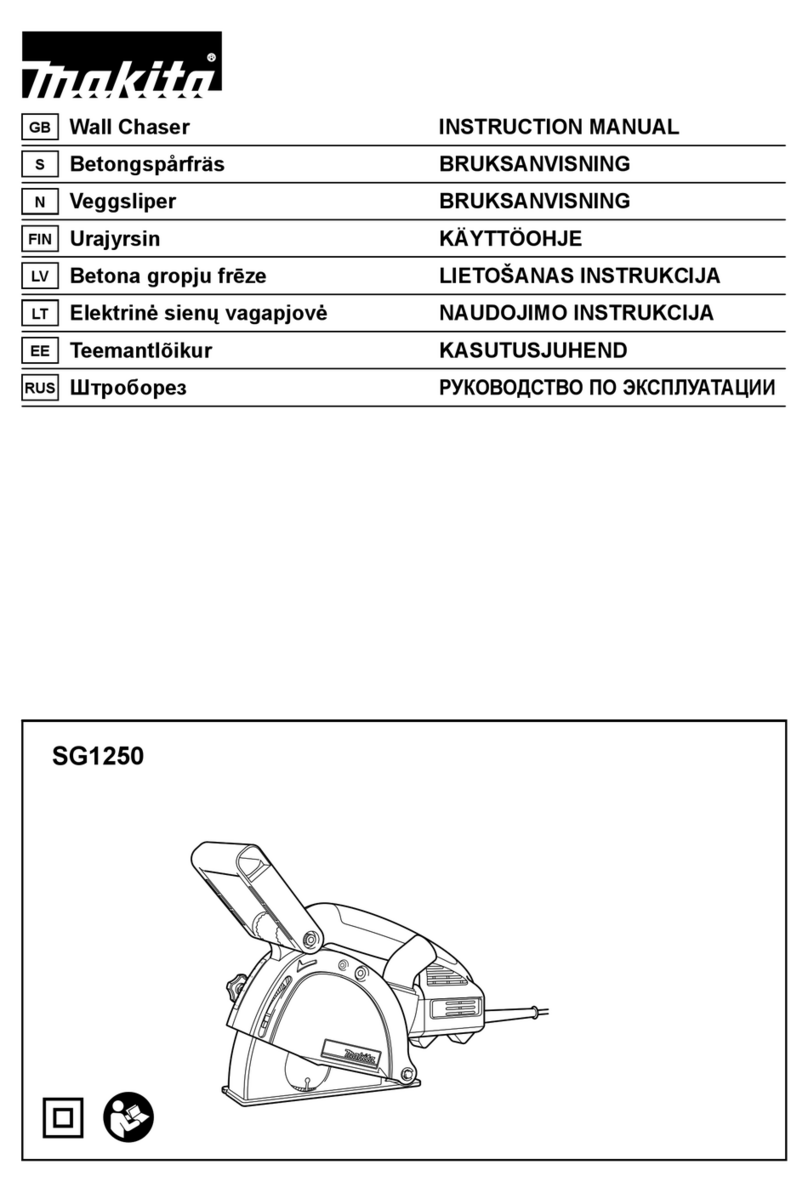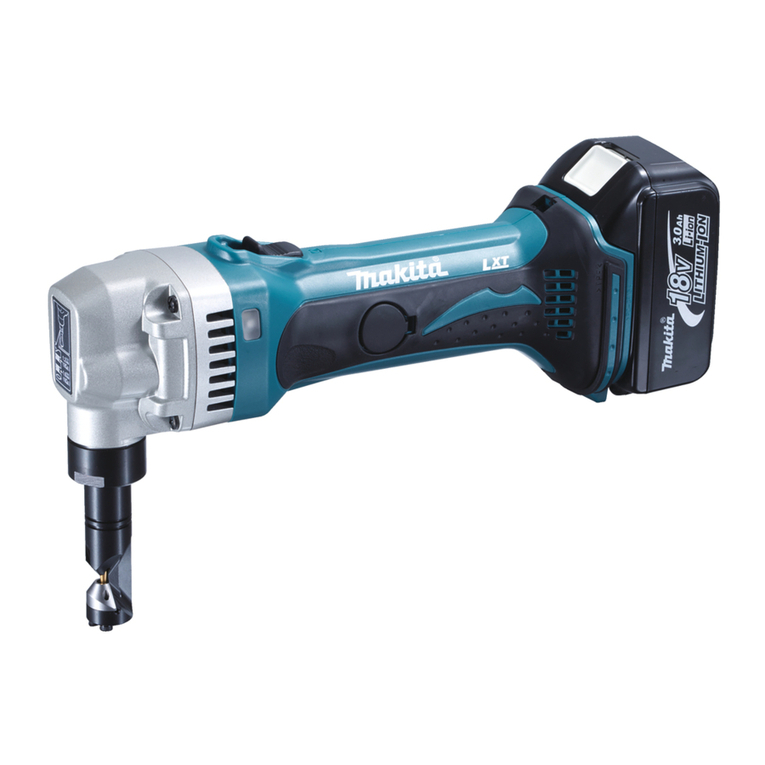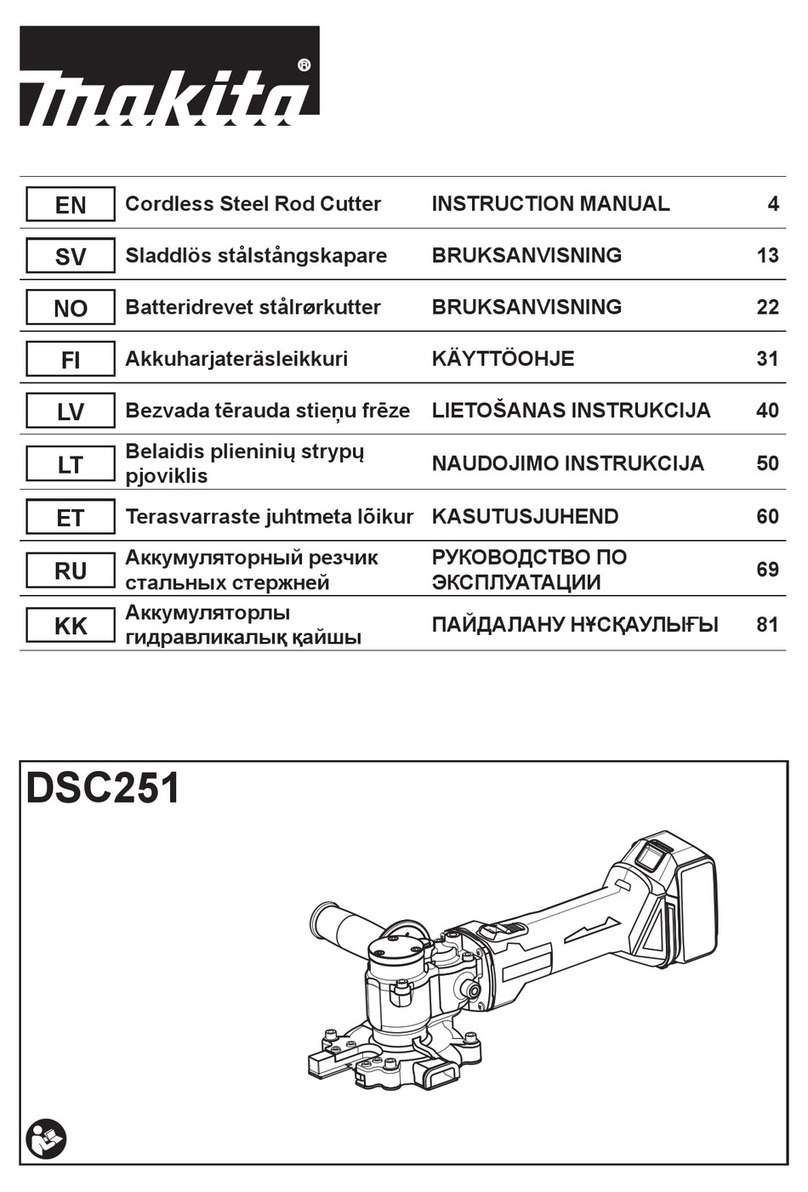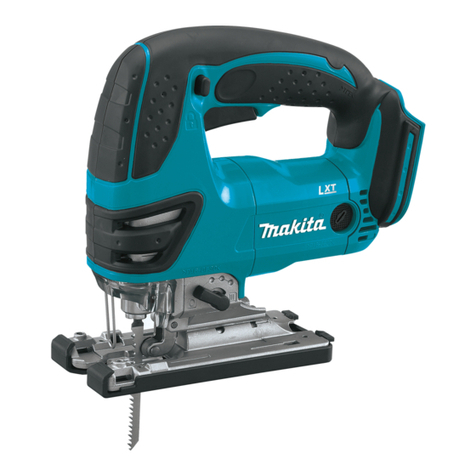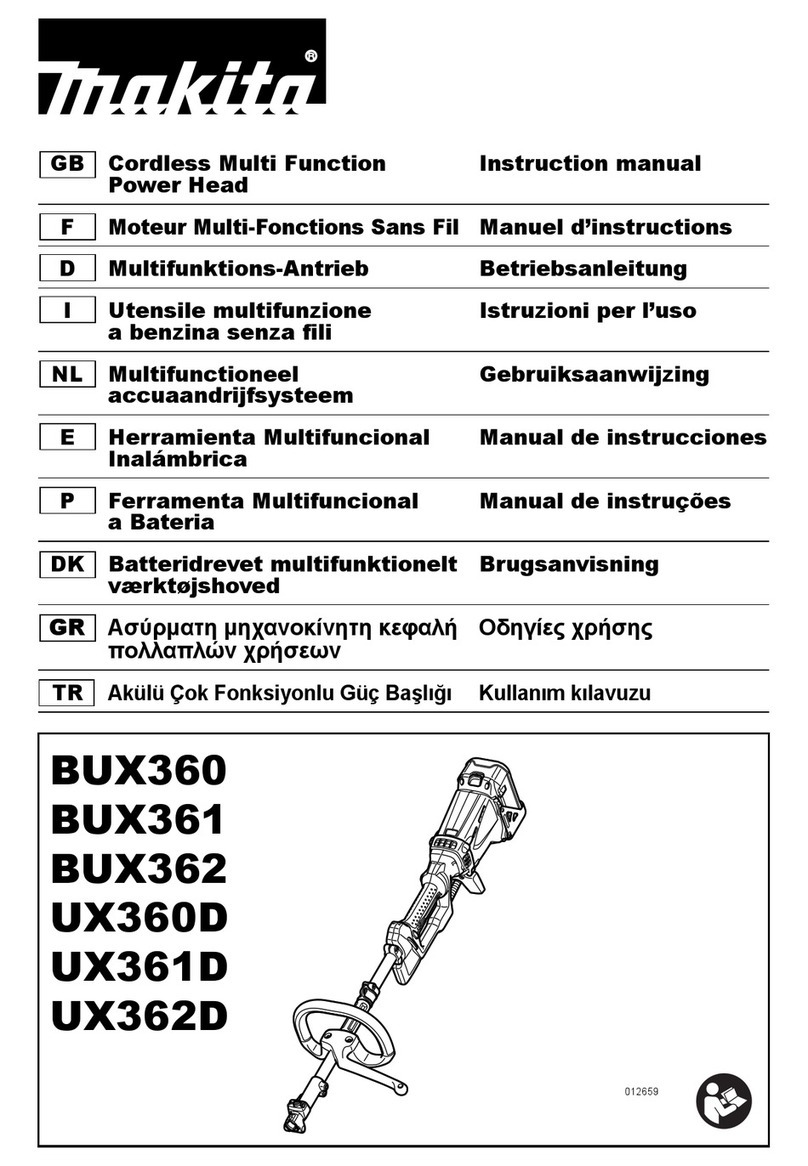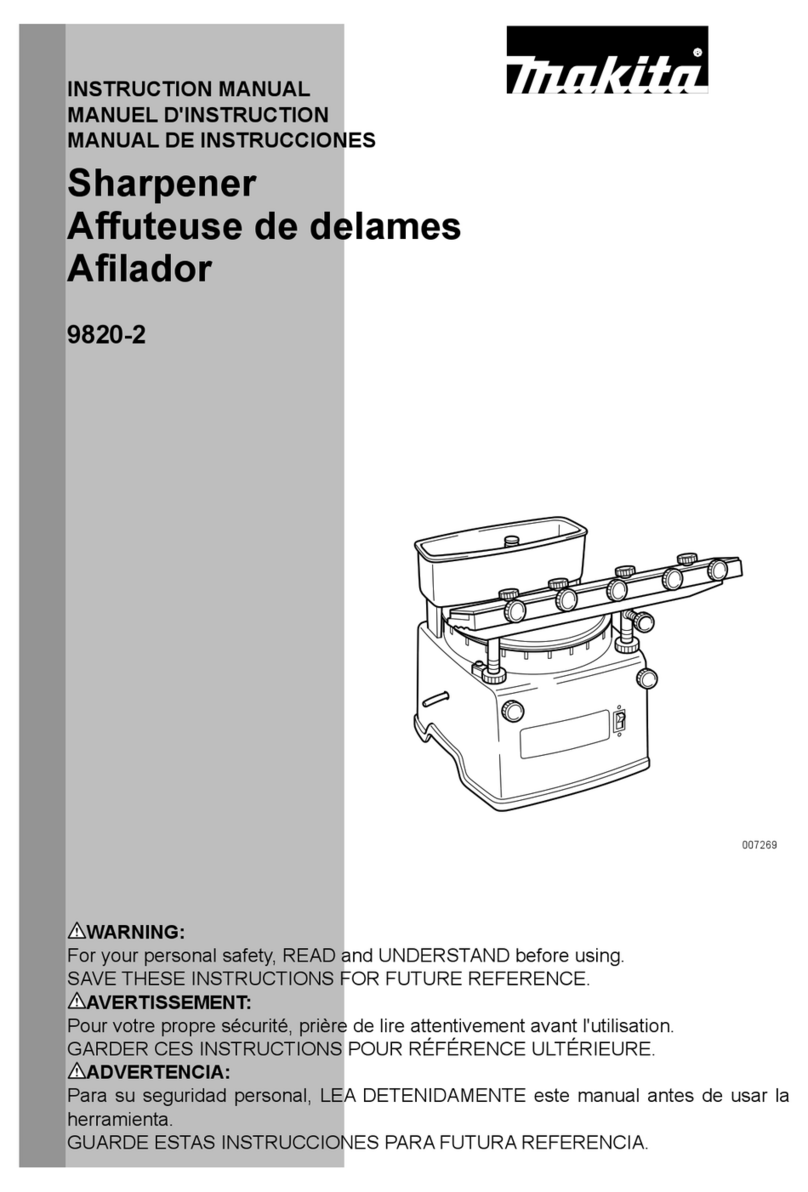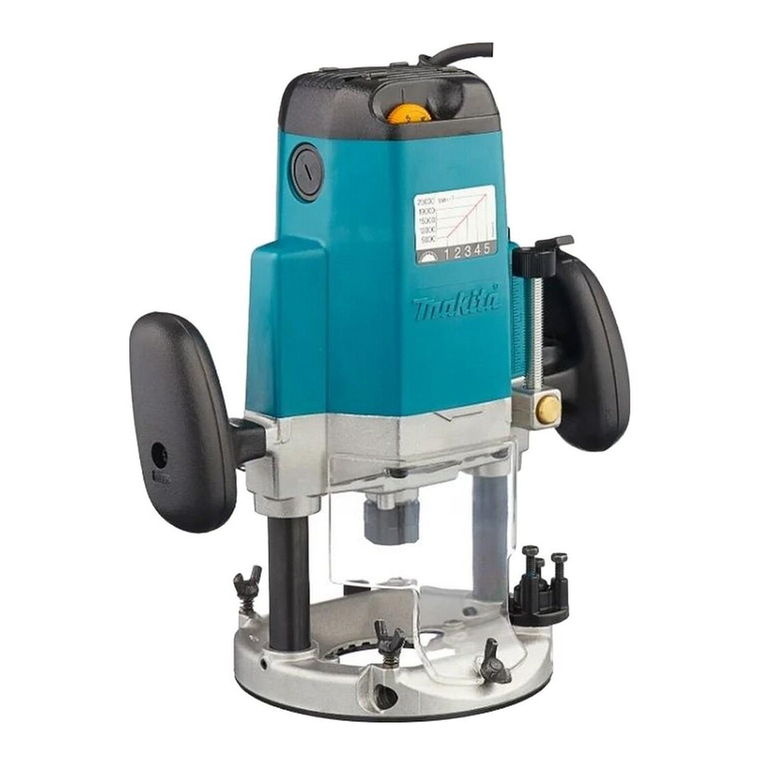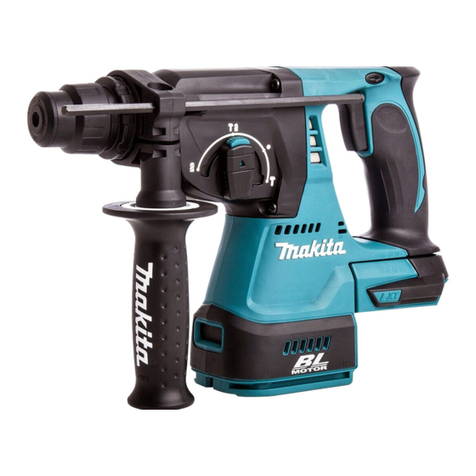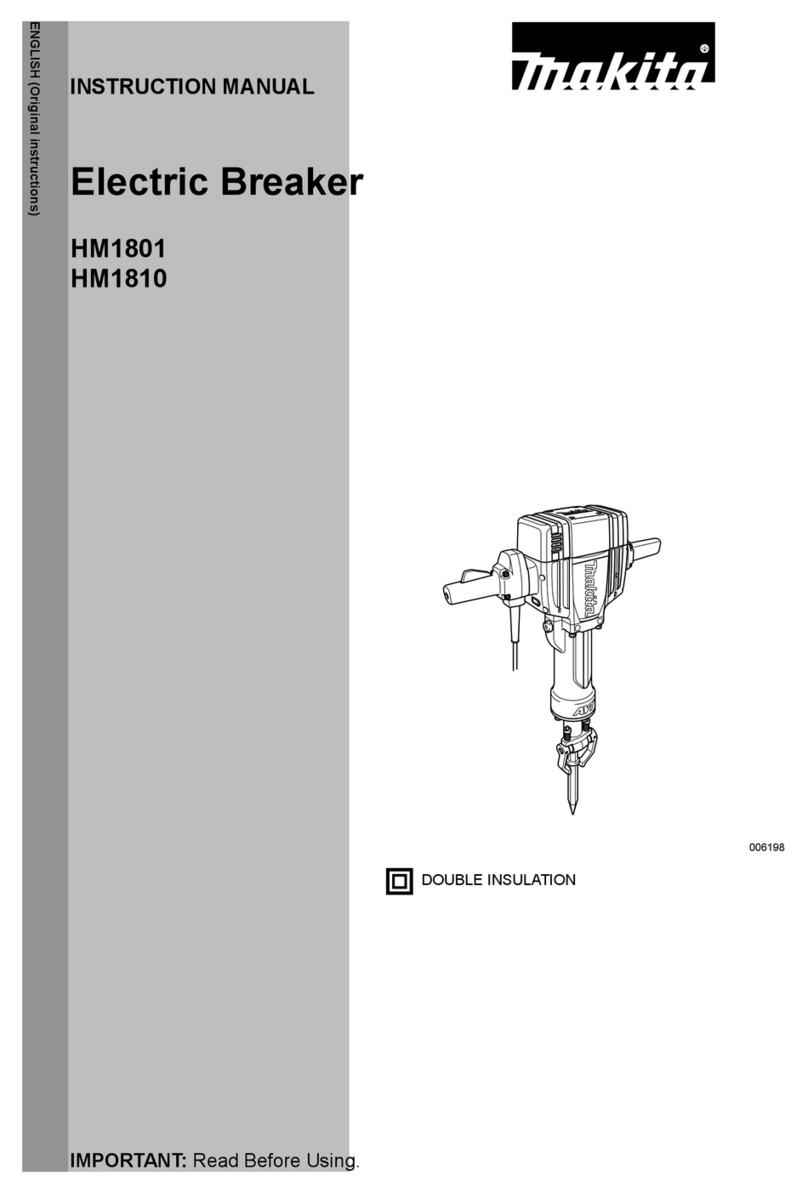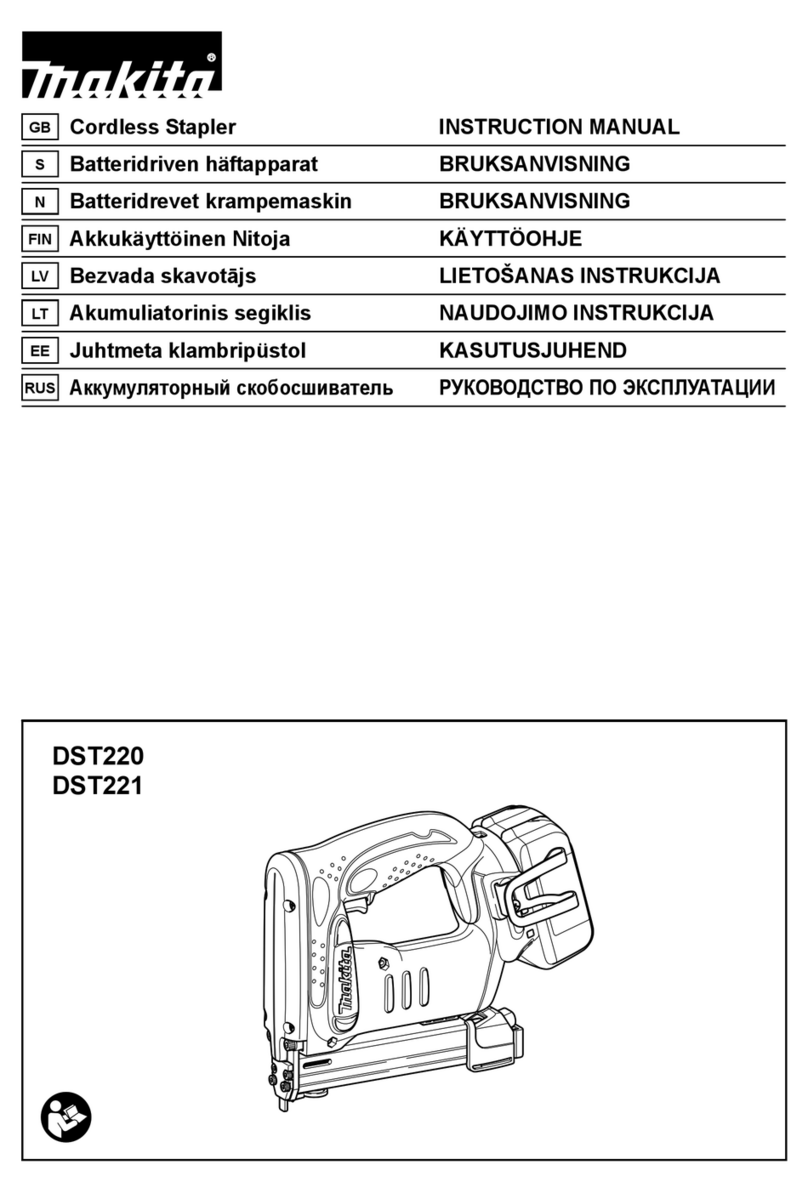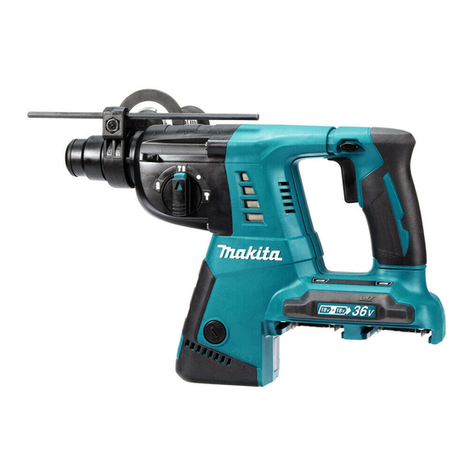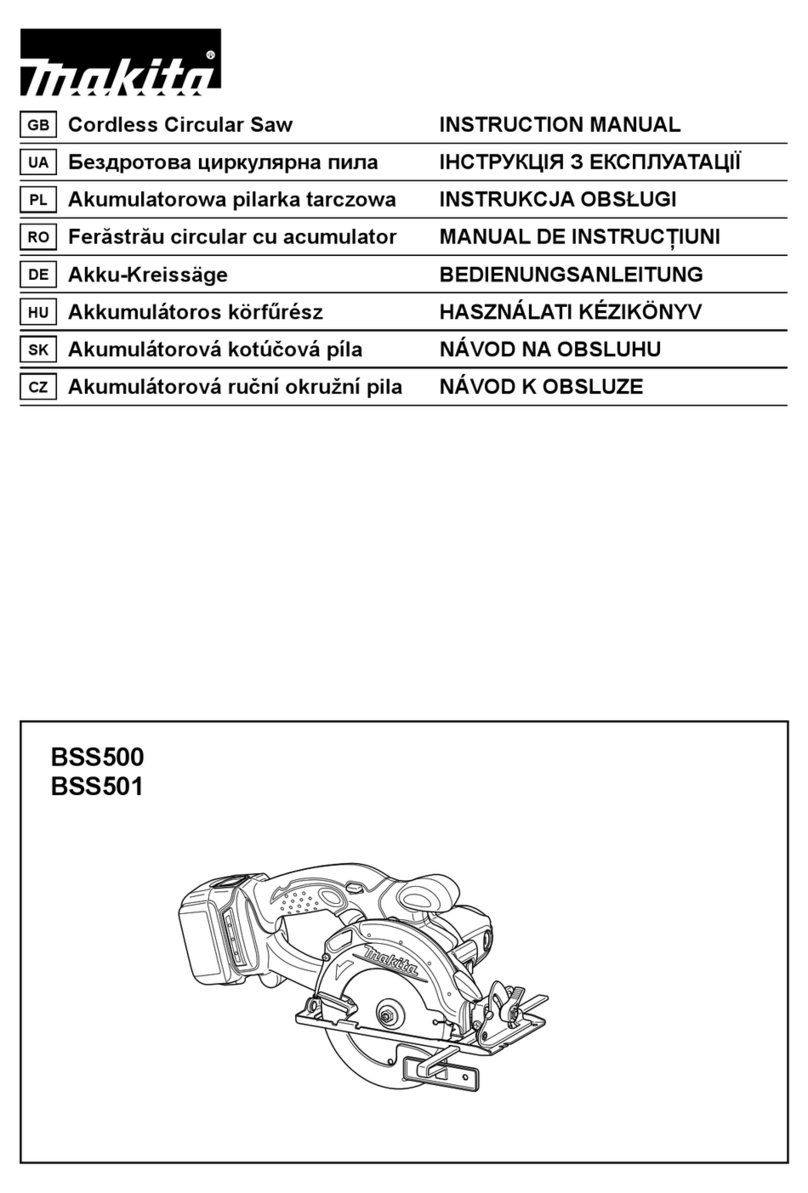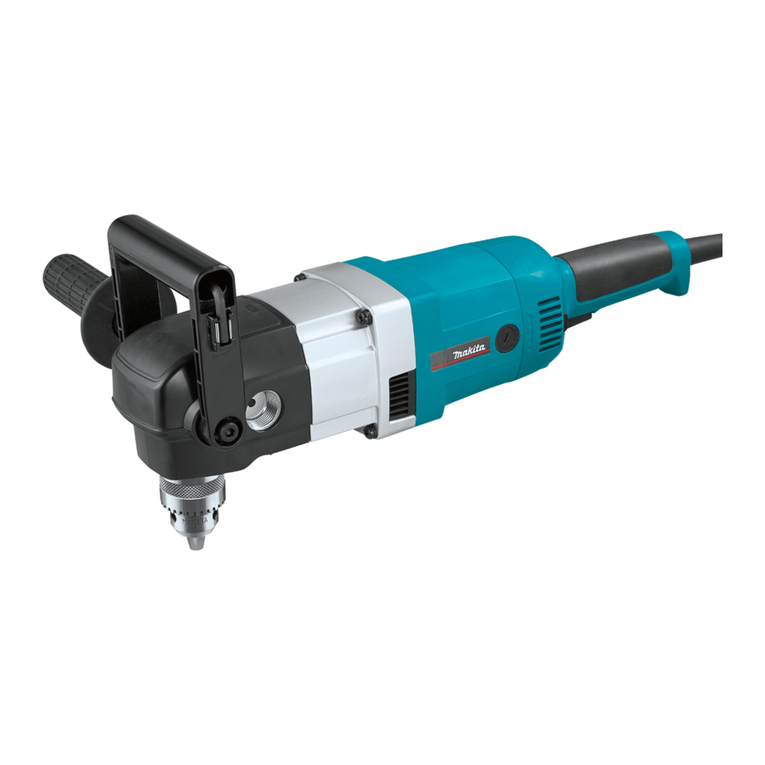6
FUNCTIONAL DESCRIPTION
CAUTION:
• Always be sure that the tool is switched off and
unplugged before adjusting or checking function on
the tool.
Selecting the cutting action
Fig.1
This tool can be operated with an orbital or a straight line
(up and down) cutting action. The orbital cutting action
thrusts the blade forward on the cutting stroke and
greatly increases cutting speed.
To change the cutting action, just turn the cutting action
changing lever to the desired cutting action position.
Refer to the table to select the appropriate cutting action.
Position Cutting action Applications
For cutting mild steel,
stainless steel and plastics.
For clean cuts in wood
and plywood.
Small orbit
cutting action
For cutting mild steel,
aluminum and hard wood.
For cutting wood and
plywood.
For fast cutting in aluminum
and mild steel.
Large orbit
cutting action
For fast cutting in wood
and plywood.
0Straight line
cutting action
Medium orbit
cutting action
006582
Switch action
Fig.2
CAUTION:
• Before plugging in the tool, always check to see
that the switch trigger actuates properly and returns
to the "OFF" position when released.
• Switch can be locked in "ON" position for ease of
operator comfort during extended use. Apply
caution when locking tool in "ON" position and
maintain firm grasp on tool.
To start the tool, simply pull the switch trigger. Release
the switch trigger to stop.
For continuous operation, pull the switch trigger and then
push in the lock button.
To stop the tool from the locked position, pull the switch
trigger fully, then release it.
Speed adjusting dial
Fig.3
The tool speed can be infinitely adjusted by turning the
speed adjusting dial. Higher speed is obtained when the
speed adjusting dial is turned in the direction of number
5; lower speed is obtained when it is turned in the
direction of number 1.
Refer to the table to select the proper speed for the
workpiece to be cut. However, the appropriate speed
may differ with the type or thickness of the workpiece. In
general, higher speeds will allow you to cut workpieces
faster but the service life of the blade will be reduced.
Number on adjusting dial
4 - 5
Mildsteel 3 - 5
Stainless steel 3 - 4
Aluminum 3 - 5
Plastics 1 - 4
Workpiece to be cut
Wood
006368
CAUTION:
• The speed adjusting dial can be turned only as far
as 5 and back to 1. Do not force it past 5 or 1, or the
speed adjusting function may no longer work.
ASSEMBLY
CAUTION:
•
Always be sure that the tool is switched off and
unplugged before carrying out any work on the tool.
Installing or removing saw blade
CAUTION:
• Always clean out all chips or foreign matter
adhering to the blade and/or blade holder. Failure
to do so may cause insufficient tightening of the
blade, resulting in a serious personal injury.
• Do not touch the blade or the workpiece
immediately after operation; they may be extremely
hot and could burn your skin.
• Use only B type blades. Using blades other than B
type blades causes insufficient tightening of the
blade, resulting in a serious personal injury.
• When you remove the saw blade, be careful not to
hurt your fingers with the top of the blade or the tips
of workpiece.
Fig.4
Fig.5
Before installing the blade, make sure that the blade
clamp lever is in the released position.
To install the blade, insert the blade (teeth facing forward)
into the blade holder until it latches. The lever moves to
the fixed position by itself and the blade is locked. Pull
the blade lightly to make sure that the blade does not fall
off during operation.
CAUTION:
• If the lever does not move to the fixed position by
itself, the blade is not installed completely. Do not
press the lever by hand to the fixed position. It may
damage the tool. Make sure that the back edge of
the blade fits into the roller.
To remove the blade, push the lever forward as far as it
will go. This allows the blade to be released.


